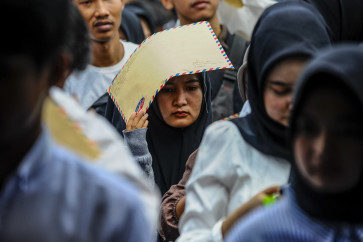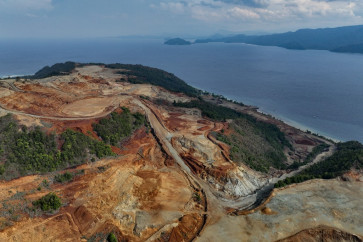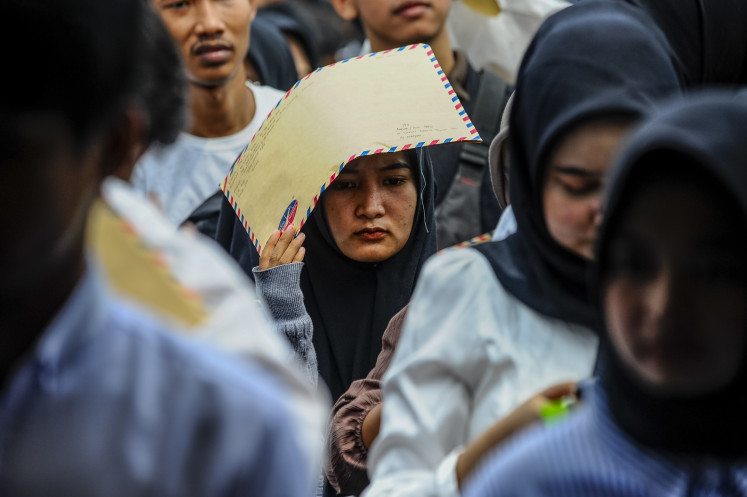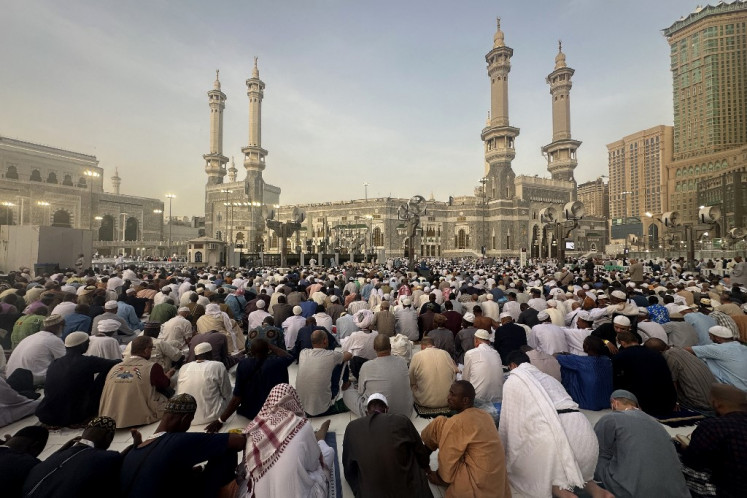Land issues to hamper power plant projects
Land-acquisition woes look poised to frustrate the governmentâs ambitious five-year plan to add 35,000 megawatts (MW) to the electricity grid by building multiple power plants
Change text size
Gift Premium Articles
to Anyone

L
and-acquisition woes look poised to frustrate the government's ambitious five-year plan to add 35,000 megawatts (MW) to the electricity grid by building multiple power plants.
The power plant construction project proposed by President Joko 'Jokowi' Widodo's administration is expected to help the country avert a crippling power crisis, with electricity demand rising at a rate of 7 percent a year.
Jarman, the director general for electricity at the Energy and Mineral Resources Ministry, revealed that out of the 35,000 MW goal, state-owned electricity firm PT PLN would develop 15.5 MW and private companies would develop the rest.
'To develop all the power plants, we will need a total of US$53.2 billion over the next five years,' Jarman said.
Combined with the development of transmission and distribution lines, the total investment amounted to $77.6 billion, Jarman added.
Due to PLN's limited financial ability, Jarman is calling for more participation by the private sector.
The government's plan to build more power plants and to improve the nation's power capacity is a builds off of previous government programs called the Fast Track Program (FTP) phase 1 and phase II.
'It consists of ongoing projects under FTP I and FTP II. Also, [it will include] ongoing projects that are not a part of the FTP scheme, projects whose funding has been secured and projects whose funding has not yet been secured,' said Benhur Tobing, the head of the cooperation unit at the directorate general for electricity at the Energy and Mineral Resources Ministry.
The FTP phase I was launched in 2006 and has successfully added 73 percent of the 9,975 MW targeted to the energy grid, with full completion expected next year.
FTP phase II, which aimed to add 17,918 MW to the grid through the construction of power plants, has run at snail's pace, with only 55 MW completed by 2014.
Benhur said that the government had tried to ease the permit process to accelerate the program, but that land-acquisition problems had presented their own difficulties.
'The electricity sector is attractive because our power demand keeps growing. It means no matter how much investors build, we will be able to absorb it [into the energy grid]. The problem is land-acquisition,' Benhur said.
Indonesian Geothermal Association chairman Abadi Poernomo, meanwhile, said the government needed to work hard if it wanted to meet its 35,000 MW target.
'Look at the development of the Batang power plant [2,000 MW in Central Java]. It is constrained by the land issue. If the government can solve the land issue, I think coal-fired power plant development [under the 35,000 MW plan] can be attained,' he said.
Abadi was skeptical the government would be able to meet its goal of generating 1,200 MW in geothermal power by 2019. Given the low level of progress, he estimated that the government should make 800 MW the new 2019 goal.
The country currently has 51,981 MW in installed electricity capacity, with an electrification ratio of 81.98 percent. As many as 52 percent of the total capacity is generated by coal, 24 percent by gas and nearly 12 percent by oil fuel.









